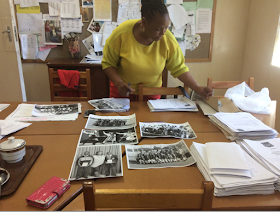I have participated in the full 6 month Global Virtual Classroom project in the past. The good news is that they are introducing a much shorter 10 week option. The following information about this is taken from the Global Virtual Conference wiki
http://minigvc.wikispaces.com/
 What is the MINI GVC?
What is the MINI GVC?
MINI GVC is the outcome of some serious thinking regarding preparedness in the context of Collaboration, Commitment, Contribution and Copyright while participating in GVC contests. After functioning as a Teacher-coordinator for GVC Contest from 2009-16 one of the participants noticed that quite often teams do not shine in collaboration which is primarily the aim and purpose of GVC - to share and care. It could be due to various valid reasons but yet we would like not to compromise on the quality and productivity of our websites.

What is the GVC Contest?
MINI GVC is a prelude to GVC Contest in which students from various countries supervised by their Teacher Facilitators would represent their schools to create a website on a pre-decided age appropriate theme. The Mini contest is open for approximately 10 weeks during September-November, February-April and June-August. The contest is open for students from K-12 schools around the world to create a collaborative website on a topic of world interest. Groups are assigned by GVC, and may consist of anywhere from 2-4 schools.
Contributions
Contributions can be text, illustrations, multimedia, recorded/textual discussions, interviews, etc all original created by the participants themselves.Copyright rules have to be strictly followed while utilizing content (text /illustrations/photos/videos etc) from another website. Attributions and Citations are a must for every post in the website.
Results
Results shall be announced after every trimester and winners will be awarded Gold, Silver and Bronze Star Certificates. Assessment will be based on Creativity/Originality, Social Responsibility, Team Spirit, Technical Skill and Copyright.
Features of MINI-GVC
- Perfect for schools with time constraints. One can choose a convenient trimester.
- Acquire new technical skills and improve existing talents.
- Improve and acquire collaborative communication skills.
- Understand and appreciate cultural differences.
- One school can participate in one or more trimesters.
- One school can register more than one group in a trimester.
Want more? Move on to the
GVC six month contest.
Have Questions?
Contact:
Project Manager - lakshmi.srinivas@gsbi.org
Program Manager - jbarnstable@gsbi.org
This program is a project of Give Something Back International Foundation.
www.gsbi.org










